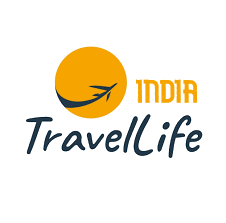In 2021, Kelowna and area’s tourism industry posted year-over-year gains compared to 2020 but remained behind pre-pandemic levels due to the ongoing pandemic and weather-related challenges. Early indicators and predictions for 2022 show that unless unexpected challenges arise, the local tourism industry expects strong performance. However, following two years of significantly reduced revenues, it will still take time for local tourism businesses to recover losses incurred during the last two years.
“Last year we saw early momentum cut short and additional challenges placed on our industry in the second half of the year,” said Lisanne Ballantyne, President & CEO of Tourism Kelowna. “Despite a difficult 2021, the industry performed better than in the first year of the pandemic, but we know there is still a long road ahead to full recovery. Now more than ever before, tourism businesses are showing their determination and commitment to service. We know our greatest challenge moving forward will be balancing the economic growth of the tourism industry while maintaining top-class guest experiences and residents’ support for welcoming visitors.”
Visitation
- Last year, approximately 2 million people made overnight trips to Kelowna and the Central Okanagan: an 18.2% increase over 2020. All months saw year-over-year increases in visitation numbers except for June (which had a very high visitation number in 2020), and August (when there were travel restrictions in place due to wildfires across the province). The visitation number increased due to more people making shorter trips to Kelowna and the Okanagan than in years before the pandemic.
- In 2021, over two-thirds (68.5%) of visitors were from BC, 12.5% were from Alberta, and the remaining 20% were from Ontario, other parts of Canada, and the United States. Just 1% were from outside North America. Prior to the pandemic, Kelowna saw higher visitor numbers from outside the province; however, with travel restrictions and recommendations against interprovincial and international travel in place, the region experienced a heavy weighting towards intraprovincial travel. Trips during the pandemic were also shorter and had an increased emphasis on connecting with family and friends. Visitor spending in the destination increased in 2021 compared to 2020 but was still down compared to pre-pandemic years.
Hotel & Accommodation Indicators
- Average hotel occupancy in 2021 was 46.9%, compared to 40.8% in 2020. This is still well below annual hotel occupancy from before the pandemic, which was closer to 65%.
- In 2021, most months saw year-over-year increases in occupancy levels except for January and August.
- Other hotel indicators saw increases including Average Daily Rate (ADR), which was $169.60 in 2021, up 10.2% compared to 2020, and Revenue Per Available Room (RevPAR) which was $79.50 in 2021, up 26.4% compared to 2020. Both of these indicators saw year-over-year increases in each month after March 2021.
- Short-term rental occupancy was approximately 67.2% in 2021, up from 63% in 2020.
Air Travel
- Traffic at the Kelowna International Airport showed encouraging levels. In 2021, there were approximately 830,000 passengers through YLW, representing an increase of 12.5% over 2020 numbers.
- In the years prior to travel restrictions due to COVID-19, YLW was seeing over 2 million passengers annually.
2022 Outlook
- With many travel restrictions lifted and increased interest and comfort with travel from outside the province, there is an optimistic outlook for the local tourism economy in 2022.
- Early indicators show strong interest and steady bookings into spring and summer for leisure or vacation travel. Tourism Kelowna’s marketing efforts work to increase interest to come and explore Kelowna throughout the year, with increased emphasis to build spring, fall, and winter visitation.
- Meetings, events, and conferences are also returning and add an important balance to spring, fall, and winter months. Bookings are strong for the coming year, and there are strong leads for major events and conferences in 2023 and beyond.
Economic Impact of Tourism
- Kelowna and the Central Okanagan’s $2-billion tourism industry is a major economic driver, generating 13,000 jobs, $204 million in tax revenue and over $443 million in direct spending at local businesses.
- The past two years have presented many challenges for local tourism businesses, and we anticipate that economic impact was temporarily, but significantly, reduced. Tourism Kelowna is working hard to support the local tourism industry to recover and re-build so it can once again generate strong economic impact and further increase quality of life for residents.
“Our tourism industry and the businesses that make up that industry deliver experiences, products, and services that make life better here in Kelowna and the Central Okanagan,” said Ballantyne. “Last year we faced challenges like never before, but we’ve battled through it, have more resolve because of it, and are optimistic about the future. We’re set up in a strong position for short-term recovery and long-term success.”
Escape the ordinary and discover the extraordinary! From bustling cities to serene landscapes, every journey begins with a single step—let us guide yours. Enjoy curated itineraries, hidden gems, and hassle-free bookings designed for explorers at heart. Whether it's a weekend getaway or a globe-trotting adventure, your Next unforgettable experience is just a click away.










